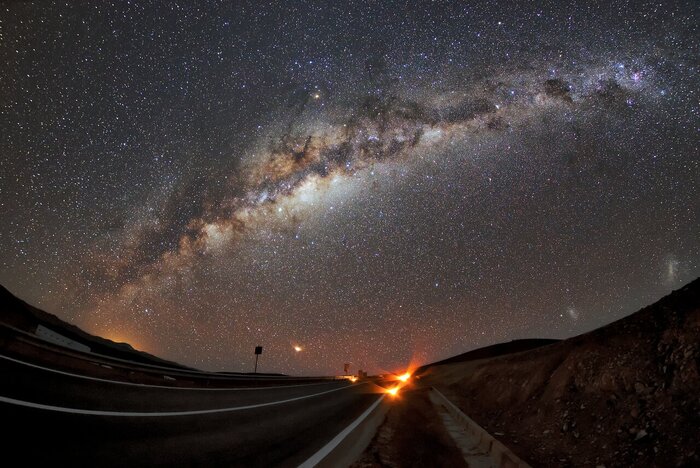The starry sky is doubly threatened
: on the one hand pollution due to
artificial light
at night, on the other the Earth's orbit increasingly crowded with
satellites
, which disturb telescope observations with their light trails.
"Italy is colossally late on these issues", astrophysicist Gianluca Masi, scientific director of the Virtual Telescope Project, tells ANSA: "Now is the time to start considering the issue and, above all, to act".
Italy
is in fact the
G20 country with the greatest light pollution
, like South Korea. The demonstration comes from space: in the images taken by satellites, Italy shines in a particular way, and not in a positive way
.
A significant energy waste, to which are added the negative impacts on biodiversity and citizens' health.
"Not being able to see the sky is a symptom that highlights a general lack of attention", continues Masi.
"In France and the United Kingdom they have long established '
star parks
' because they understood the importance of defending the possibility of enjoying the night sky: the starry sky - states the astrophysicist - is a good for everyone".
An asset also threatened from above.
Starlink satellites
,
SpaceX's mega-constellation for the global Internet,
have exceeded 5,100
already after the first launch in 2024 and Elon Musk's goal is to reach around
40,000 satellites
, to which new constellations such as OneWeb will soon be added and Amazon's Kuiper.
Satellites reflect the light of the Sun, especially after sunset and before sunrise, and with greater intensity the higher their orbit.
Therefore,
every time they enter the observation field of a telescope, they leave bright white trails that irremediably ruin the images and data collected.
It is estimated, for example, that
2.7% of all images collected by Hubble in the last 20 years are crossed by streaks like these
and the percentage is constantly increasing.
This is why astronomers and enthusiasts are mobilizing on the occasion of the 32nd
National Day on Light Pollution
, which occurs on February 16, coinciding with the National Day of Energy Saving and Sustainable Lifestyles.
The initiative is organized by the Italian Amateur Astronomers Union, with the collaboration of the Association of Italian Planetariums and the participation of the National Institute of Astrophysics.
On the evening of 16 February, at the end of the Caterpillar radio broadcast on Rai Radio Due, an event dedicated to the topic of light pollution will be broadcast, which will be broadcast live on the Uai's social profiles.
It will also be possible to participate in many other initiatives throughout Italy: among others, the Rubicone Astronomical Association will turn off the lights of the Malatesta Castle of Longiano (Forlì-Cesena), with astronomical observations and guided tours by torchlight, while the Center Astronomer Neil Armstrong from Salerno is planning an evening walk to collect rubbish on the seafront and admire the starry sky.
On this occasion, the proposal was also born, launched by the Virtual Telescope Project, to establish
an area protected from light pollution
in the area of Manciano, in the Grosseto Maremma, characterized by the darkest and most starry night sky in peninsular Italy.
The extraordinary quality of the sky is demonstrated by around thirty telescopes operating beneath it, making the Manciano area the richest in astronomical stations in the country.
Reproduction reserved © Copyright ANSA

